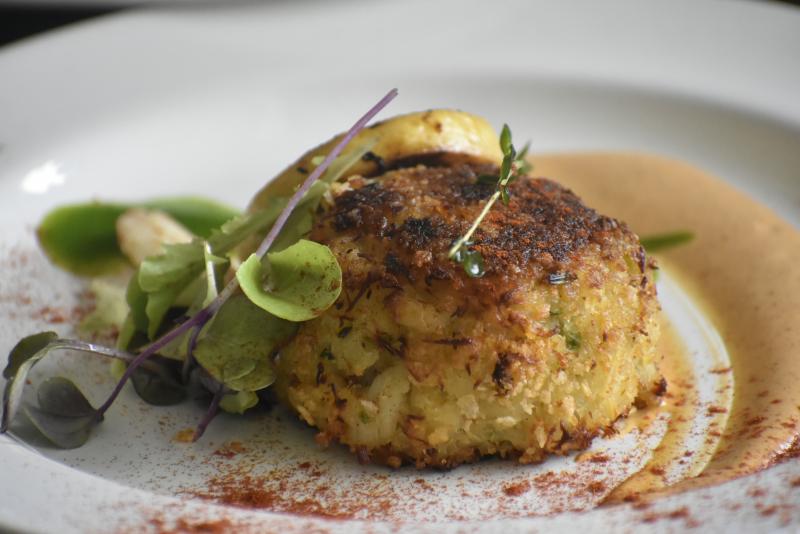President and CEO Michael Ziebell said the company was slowed down by the COVID-19 pandemic, but they have resumed in-person investor socials like one held July 24 in Brookings.
trū Shrimp has about 70 individual investors and various companies involved, and interest in the project is resuming with Ziebell signing more than two dozen non-disclosure agreements in the past few weeks.
“Here locally, we are looking to raise as much capital as we can. We have a target of about $45 million for common equity in the trū Shrimp Company proper and then of course with the help of Bank of America we are looking for the project financing to build the facility," he said.
Typical investors in the project are often business owners, farmers or people related to agriculture who have been involved in other successful startups in the region, such as ethanol plants.
“They see trū Shrimp as a similar opportunity,” Ziebell said.
He said their goal is local ownership.

Shrimp of various sizes are on display in a tank in the development offices of trū Shrimp Company. Photo taken April 10, 2017, in Balaton, Minn. (Mikkel Pates / Agweek)
“At Madison Bay Harbor, we’re going to grow shrimp indoors in shallow water, which means 12 inches of water. The facility consists of a hatchery, the main harbor itself where the shrimp are grown, along with a water engineering center,” he said.
The water engineering uses a series of biofilters to remove the waste and the ammonia so the water can be recycled, reclaimed and reused.
Madison Bay Harbor will have the capacity to produce 4.6 million pounds of shrimp annually and about 9,000 kilograms of chitosan, which is a co-product of shrimp production. Ziebell said the company hasn't found the exact location, but they will be building a processing facility or galley somewhere along the Interstate 29 corridor, but very likely Sioux Falls due to its proximity to the two interstates, which aid with transportation. He says the project will have an estimated $40 million annual economic impact in South Dakota once fully operational.
The U.S. consumes 1.6 billion pounds of shrimp annually and more than 94% of it is imported, so Ziebell said there is great opportunity for growth. trū Shrimp already has several major supermarket chains interested in the shrimp, and they will also be selling to food service or restaurants and direct to consumer via their website.
“We’re even talking to a retail client in Germany,” he said.
Shrimp are fed a 40% soy-based diet, combined with hard red wheat and some corn. trū Shrimp is working with Prairie AquaTech in Volga, S.D., to make experimental feeds. Ziebell said the company hopes to continue that relationship in the new project. That unique diet, combined with their revolutionary production technology, makes it the most sustainable, traceable and effective way of growing shrimp, according to Ziebell. He said their aquaculture production also provides a real opportunity for soybean farmers and is a new and emerging market.
“One of the reasons we came to the Midwest was that we brought the fish to the feed. We’re right in the heart of soybean production,” he said.
Ziebell said trū Shrimp also has interested clients for the chitin co-product that will be used in the medical field as a natural hemostat and for many other applications. The material comes from the shell that shrimp molt as they grow, and trū Shrimp has the only technology they know of to collect it from the tidal basins.
“That shell has a very valuable natural polymer in it called chitin and it can be further processed into chitosan. And because of the nature in which we grow the shrimp, indoors in total controlled conditions with no disease, so we don’t need any antibiotics,” he said.
Plus, there is no pollution or heavy metals in the water like there is in the ocean. So, trū Shrimp is developing a chitin that is free of FDA deficiencies bound for medical device use.
Tru Shrimp leadership hopes to wrap up financing in 2020 and start building in 2021. The harbor will take 22 months to complete.
The Link LonkAugust 03, 2020 at 05:37PM
https://ift.tt/2Xn59H7
trū Shrimp resumes equity drive - AG Week
https://ift.tt/3eNRKhS
shrimp


No comments:
Post a Comment